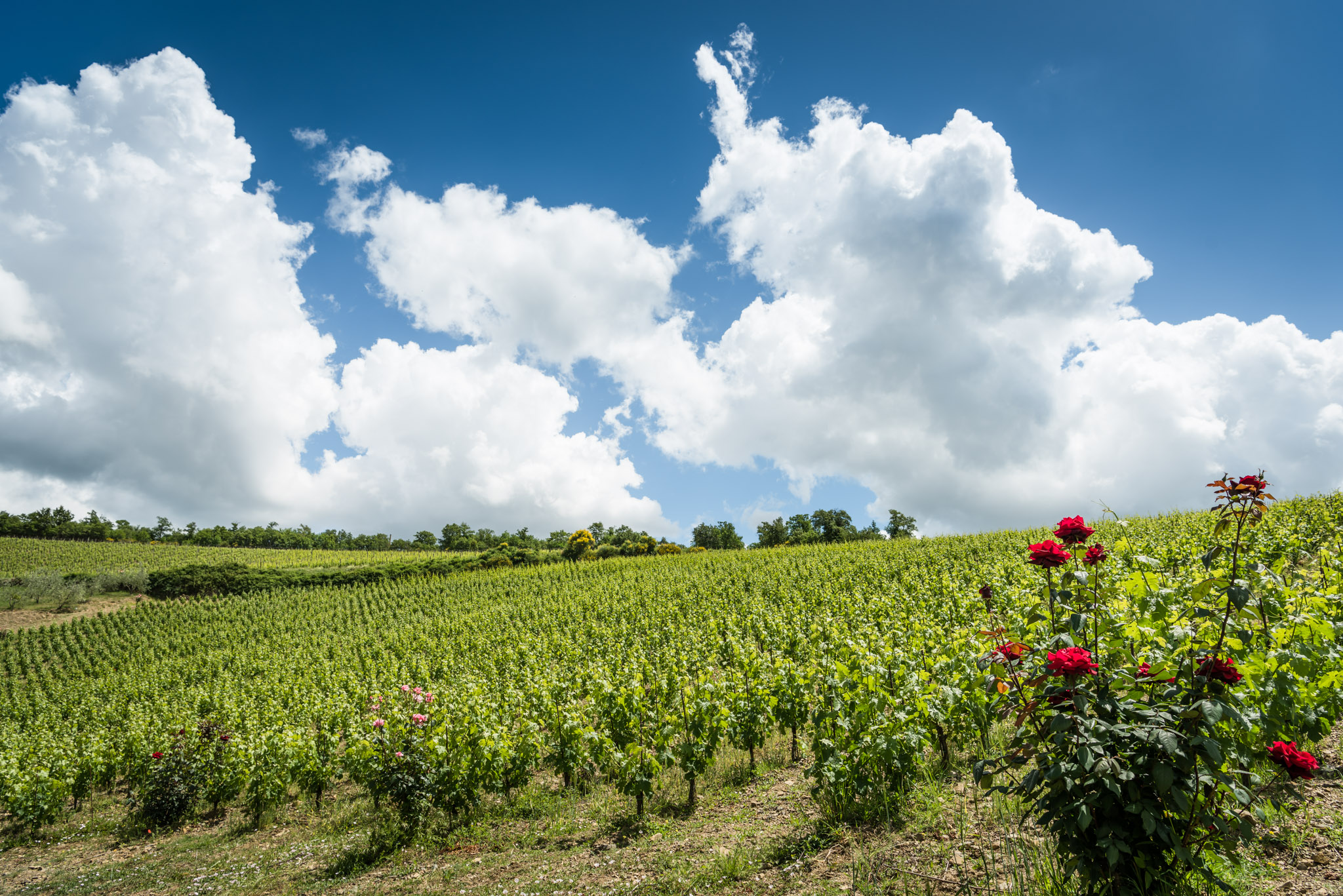
Easter 2021 is just around the corner and we are all getting ready for this event.
Especially in Italy Easter is something that we all look forward to.
Something that is well rooted in our culture. A time of gathering, a time of sharing and of course a time to spend with your family and loved ones.
The Bel Paese, our beloved Italy, is obviously rich of curious Easter traditions.
Each region has its own customs and beliefs.
The Italian culture is the result of the mixture of the customs of all populations that comes from all of the different regions.
However, we must point out that as far as religious holidays are concerned, every region has maintained a strong identity, which is expressed through the typical local cuisine and the Easter religious events.
Get comfortable, pour yourself a glass of wine (or a cup of coffee in case you are reading this article in the early morning) and let’s start our journey.
Here we will talk about the Italian regions having the most peculiar and interesting Easter traditions and dishes.
Val D’Aosta
Let’s start from the north of Italy then, precisely from Valle d’aosta.
It is obviously the smallest region of Italy, bordering with France and Switzerland.
Valle D’Aosta is the perfect summary between the Italian tradition of northern Italy and those traditions inherited from rural France.
The typical cooking of this area is a poor one, simple and based on seasonality.
Typical dish of the Easter period is certainly the Crescia di Pasqua which is nothing but a leavened focaccia made with eggs, olive oil of the area and grated pecorino cheese. Inevitable is also the green cake, made with wild herbs from the fields. The origin of this dish is obviously to be traced back to ancient times, when shepherds had to prepare something simple and nutritious at the same time.
Of course, we should talk about wines as well.
Even though they are not part of the Easter tradition, they are never missing in the tables of Italians.
Among the most peculiar wines of Val d’aosta we can certainly include Blancs de la Salle et Morgex produced with Priè Blanc grape, and which is actually one of the highest vineyards, located at 1,200 meters above sea level.
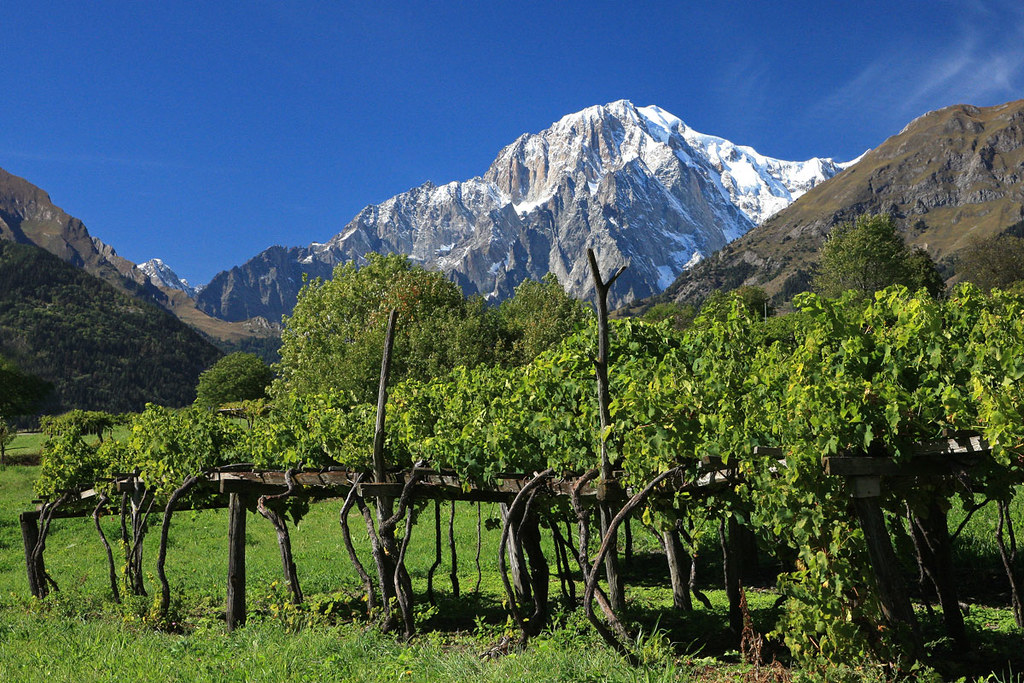
Piedmont.
On Piedmontese tables we will surely find the classic Agnolotti for Easter Sunday. We have, in this area, extremely peculiar customs such as in Romagnano Sesia where for Holy Friday, only in odd years, takes place the scenic representation of the Passion of Christ. Talking about wine, well, in these areas you will never be dissatisfied. We have a considerable production of red wines, and the wine production has its roots in ancient times. In these areas Nebbiolo is the main grape and gives life to Barolo and Barberesco. Of course, we must also mention wines such as Barbera and Dolcetto, which are among the most famous and renowned Italian reds.
Lombardy.
In this area religious traditions meet the profane. Important is the legend of Saint Columbanus, a legend spread in Milan and Pavia which tells about the possible origin of the tradition of consuming Easter dove. Saint Columbanus was an Irish abbot who in about 612 AD was received by the Longobard Sovereigns.
A sumptuous banquet was prepared for him. All kinds of delicacies, and in particular the best game was prepared in his honor. Colombano, however, because of the Lenten penance had to desist from eating. Queen Theodolinda, however, was offended, so the saint said that he would participate in the banquet only after having blessed the meat. Raising his hands in sign of the cross, the game was transformed into bread with the shape of a dove. the Dove that is actually, in the traditional Christian iconography, considered the symbol of saints’ holiness.
Talking about wines, this area is rich in excellent products as well. It is important to mention the denomination Valtellina Superiore DOCG subzone inferno, which represents one of the most important viticultural areas of this region. Here, just like in Piedmont, Nebbiolo is the prince of grapes. An extremely difficult grape, which however gives a noble wine, elegant and at the same time austere.
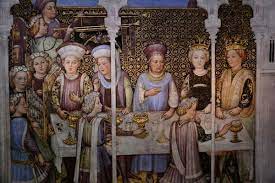
Friuli Venezia Giulia.
Another region of Northern Italy that cannot be ignored when we are talking about peculiar Easter traditions is Friuli Venezia Giulia. Very popular in this area is the traditional Via Crucis (Way of the Cross) but the most particular custom, and maybe the most bizarre, is the launching of the Cidulos in the night between Easter Sunday and Easter Monday. After lighting a fire visible from the village, wooden wheels are set on fire and then thrown.
After that, a humorous or good-luck rhyme is enunciated.
This tradition has its roots in Celtic culture.
As for food in Friuli Venezia Giulia, the typical dish is smoked pork shoulder served with the so called Pinca, which is nothing else than a flat bread.
As for wines, this is certainly the homeland of great white wines.
Wines, which have imposed themselves at an international level, so much that many have started to define them as “super whites”.
Let’s remember that a well-structured white wine can absolutely match a dish made of pork, such as Friuliana smoked shoulder.
Let’s move now on to central Italy.
Emilia-Romagna.
In this region takes place an extremely particular custom, in the city of Firenzula D’arda, called “Ponta e Cull”. It is said that this tradition dates back to the early twentieth century. It is a popular game that takes place immediately after Easter Mass. The participants, each with a hard-boiled egg, challenge each other to break the opponent’s egg (both the top and the bottom of the egg i.e. “Ponta” and “Cull”) and secure the prize. As for food and wine, unfailing in Emilia-Romagna is the union between Lambrusco and lasagna, with the only difference that for Easter day is prepared a particular recipe of green lasagna alla Bolognese.
As a second course they usually serve lamb with peas and bacon.
And dulcis in fundo the Easter loaf is served as dessert and accompanied by some anise or cognac to cleanse the palate.
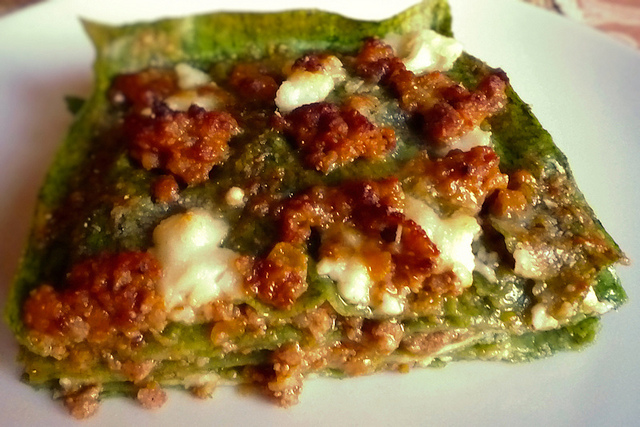
Of course, we couldn’t exclude “Easter in Tuscany” from our trip.
The tradition that we consider most representative is the bursting of the cart in Piazza Duomo in Florence. This tradition dates back to the times of the First Crusade. After the end of the ceremony, the bishop climbed on the altar of the Cathedral and lit a rocket that has the shape of a dove, and that will hit a wagon that was previously pulled by oxen through all the streets of Florence to Santa Maria del Fiore. The cart will then burst in front of the eyes of those present who will be enraptured by this spectacle.
The dove here represents the holy spirit and if everything goes according to plan, the bursting of the cart is synonymous with good luck for the city of Florence.
As for the typical food, surely the crostini di Fegato, and the buglione d’agnello constitute the typical Easter lunch in Tuscany. As a dessert, surely Pan di Ramerino will be the great protagonist.
And what about wines? Well, clearly Tuscany is always Tuscany.
You can indulge yourself in this region. Chianti Classico, Brunello di Montalcino, Montepulciano, Bolgheri, San Gimignano.
In short, there is no lack of wine areas in this region and you will surely find the perfect wine for your Easter lunch.
Staying in central Italy, but going slightly south, we can find Latium.
Latium.
In this case it is important to mention the procession of Good Friday in Orte.
Here the confraternities parade through the town carrying crosses on their shoulders and the penitents follow wearing chains on their ankles. You can breathe the typical air of historical festivals where tradition, folklore and religion intertwine creating a unique atmosphere.
The main dish of this splendid region is abbacchio with a side dish of artichokes and a typical salami called coralina.
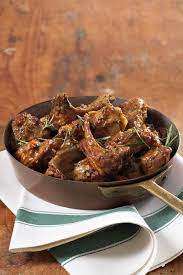
As for wines, surely a bottle coming from Cesanese will not disappoint you. They are wines which tell about the rural environment from which they come from. Extremely traditional and characteristic wines.
Here we finally arrive in southern Italy.
Most probably the south of Italy is the area where religious traditions are more deeply rooted in people’s hearts.
Let’s start from Molise.
Region extremely well known all over the world, but that too often is forgotten by Italians and that encloses beauty in every corner. Molise really has a lot to offer. Probably the most famous representation that takes place in the Easter period is held in Isernia.
On Good Friday, 100 faithful penitents with their heads encircled by horns of thorns carry heavy crosses in procession through the streets of the city.
A suggestive and touching scenario.
The traditional Easter dishes of Molise are certainly the lamb with cheese and eggs and the Easter pine cone.
And if we want to talk about wines? Even Molise offers us excellent options. We have in this region two areas of reference for the wine tradition. The first one is the one along the valley of the river Trigno, and that borders with Abruzzo. The other one the Biferno valley, is located more inland in the area of Isernia.
All you have to do is try what this region has to offer
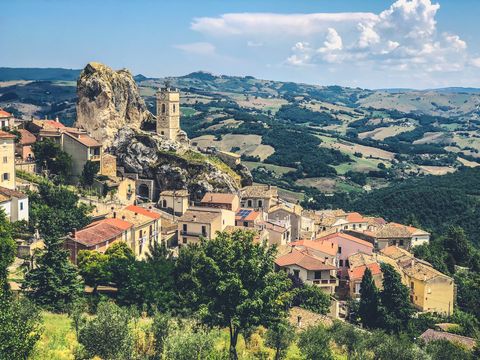
Campania
Continuing we find ourselves in Campania, where in the province of Avellino always on Good Friday takes place the procession of the Mysteries. Also in this case it is about traditions dating back to the period of Crusades.
What about food, of course, Campania reserves beautiful surprises to those who are looking for a culinary experience. The great protagonists of Easter tables in Campania are certainly Casatiello and Pastiera.
Probably the most renowned wine region of this region is Irpinia. This is none other than the area of Avellino. Homeland of Greco di Tufo, Fiano and Taurasi.
After Campania’s wines, we move to Apulia.
It will be the land of important wines, intense and with a strong character. This region has a huge wine potential. Negro Amaro, Uva di Troia and Primitivo are the jewels of these areas.
As for Easter traditions, Apulia is obviously rich in events. For example, in San Marco in Lamis (Foggia) on the night of Good Friday we have an event where fire is the protagonist. The historical area of the town is illuminated thanks to the huge wooden flashlights set on fire that accompany the procession of the Madonna. The typical dishes of these areas are obviously the Brodetto di Pasqua, preceded by the blessed boiled egg, and the lamb made of almond paste.
To end our journey we will talk about the two largest Italian Islands.
Sardinia
As for Sardinia, we obviously know that it is a land rich in traditions and spirituality. During the Holy Week we have for example the rites of the deposition of the Cross.
Besides these traditions belonging to the Christian religion we also find celebrations having their origin in ancient times such as the rites connected to the myth of Adonis.
As for food and wine, Panada is the queen of Sardinian Easter tables.
As for wines, the most important ones are obviously Vermentino for white wines and Cannonau for red wines.
Sicily
Talking about Sicily and about Easter traditions which cross the sacred and the profane, we cannot forget to mention Il Ballo dei Diavoli (Devils’ Ball), which takes place in the town of Prizzi. During the course of this festival, we find actors dressed in red representing the devils and others dressed in yellow representing death. These characters will spend the day annoying people walking down the street. The play is meant to depict the devils and death trying to prevent the meeting between Our Lady and Jesus Christ. They will succeed twice, but on the third attempt they will be hit by the Angels while the bells are ringing in celebration. Once the devils have been defeated, they will perform the rite of purification of sin with the gesture of “pigliari ‘a paci” (take peace), bending down for three times in front of the statues of the Madonna and of the risen Christ.
As far as typical foods for Easter are concerned, Sicily really has a lot of them, in fact it is one of the richest regions from a culinary point of view. For example, in Prizzi during the feast of the devils’ ball is distributed a typical sweet made from short pastry and hard-boiled egg called Cannatedde. Another typical dish that we generally find all over Sicily is the impanata pasquale ragusana (Easter breadcrumbs), and as a dessert, well, obviously we have the cassata.
Sicily is also a territory which produces excellent wines. To mention some of them we have Marsala, Passito di Pantelleria, Moscato di Noto and obviously Malvasia delle Lipari.
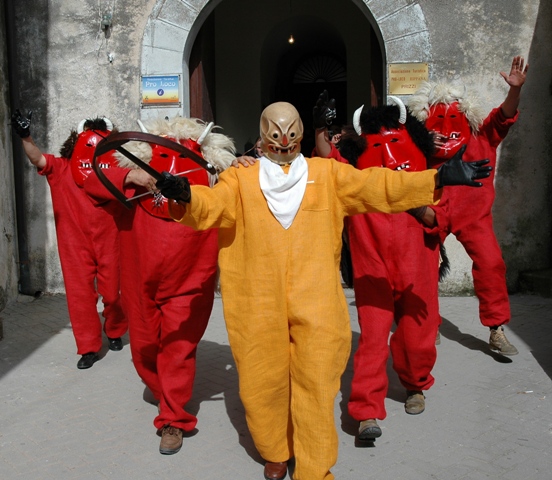
Conclusion
In short, even in this region there are wines and foods for every palate.
Our Italy, as we have seen, is a country rich in history, art and culture, everything to be discovered, to be lived and, above all, to be loved.
Therefore, immerse yourself in these traditions, in the flavors and colors of this Italy.
We wish you all a Happy Easter 2021






Leave a Reply